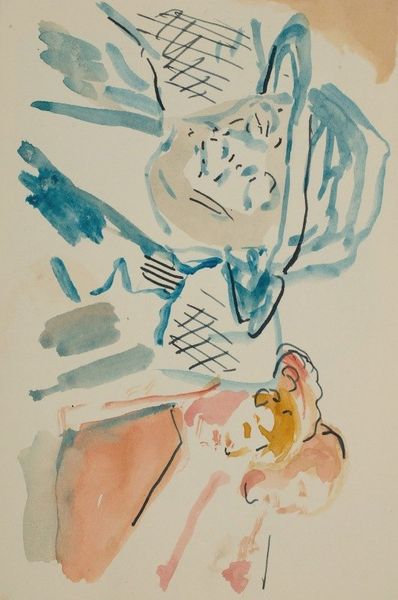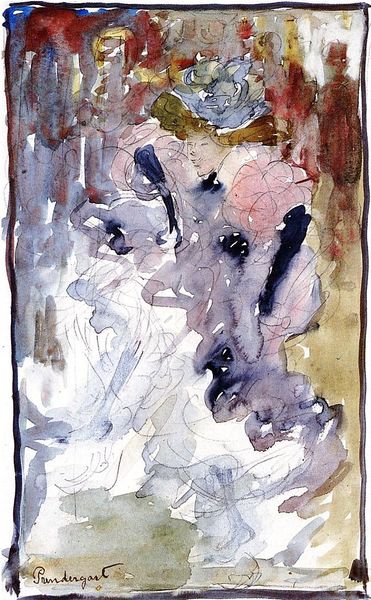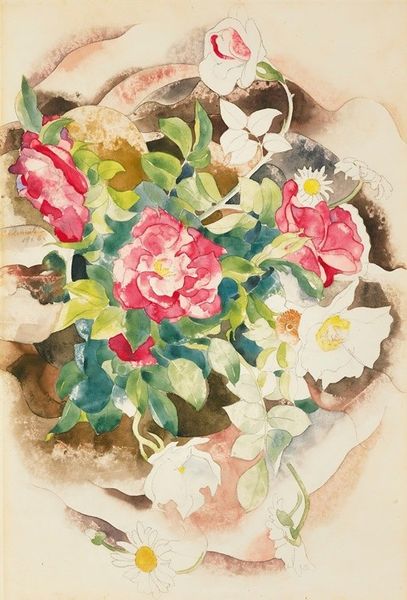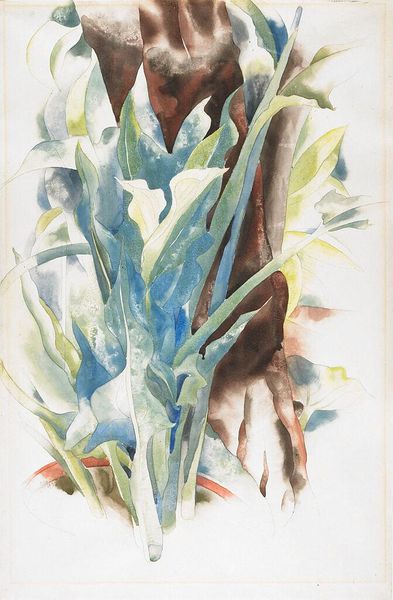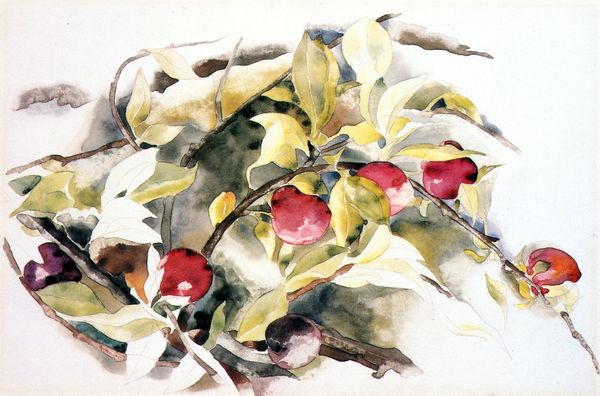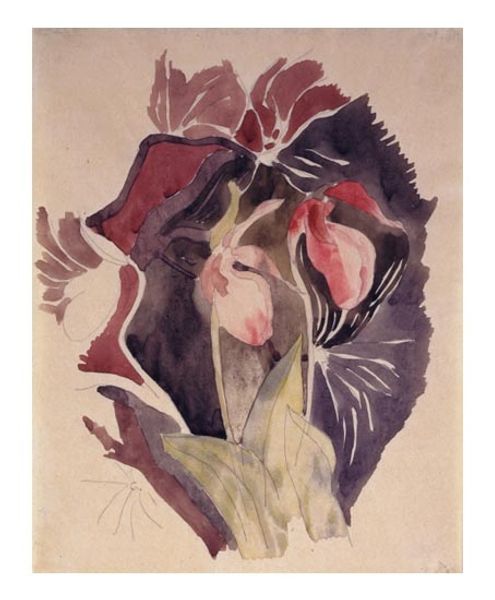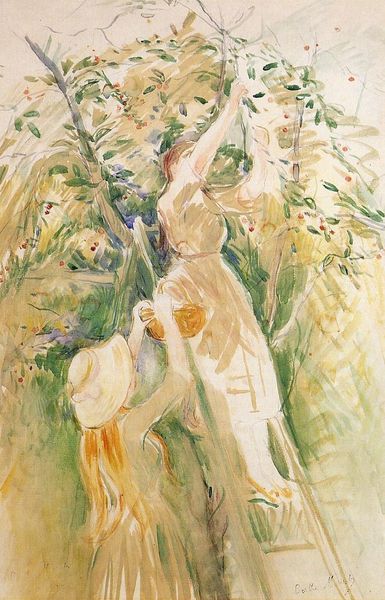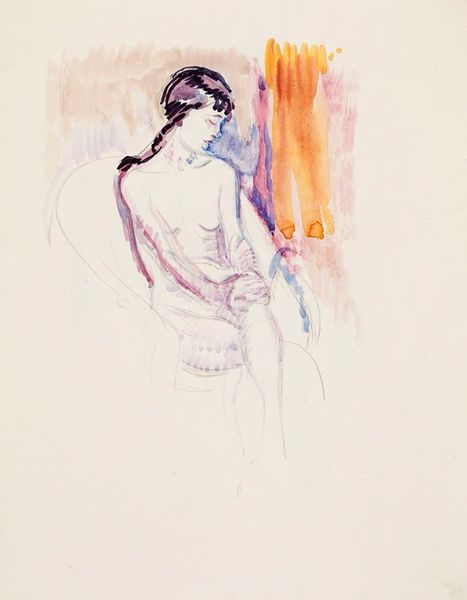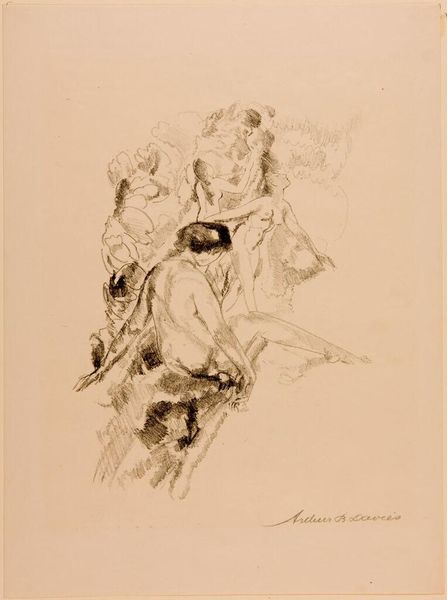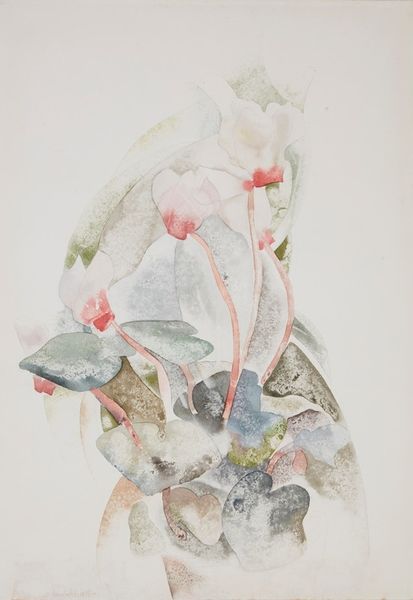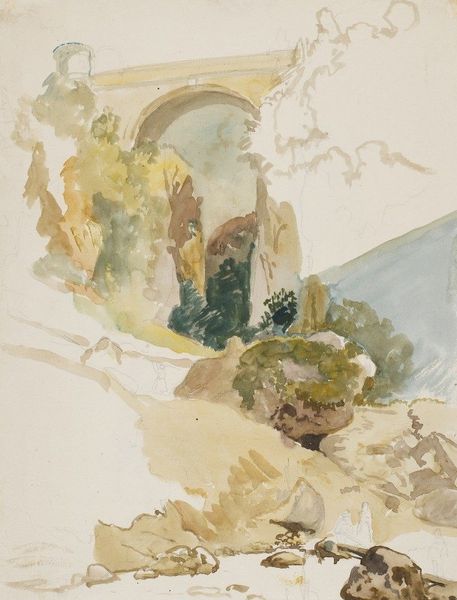
drawing, painting, paper, watercolor
#
portrait
#
drawing
#
painting
#
landscape
#
figuration
#
paper
#
watercolor
#
watercolour illustration
#
botanical art
#
modernism
#
watercolor
#
realism
Copyright: Public Domain: Artvee
Editor: This lovely watercolor is called *Purple Iris*, created around 1920 by Charles Demuth. There’s a fragility and delicacy to the colors, like I'm looking at the flower through a soft lens. How do you interpret this work in relation to the artistic movements of the time? Curator: Considering the historical context, it's interesting how Demuth navigates the space between realism and modernism here. While he's clearly representing an iris, the loose washes and emphasis on color create a sense of abstraction. Do you see how the almost photographic detail coexists with the flattening of form that we associate with modernism? This challenges the traditional notions of both botanical illustration and academic painting that had been in place since, well, the creation of the Royal Academy of Painting in 1648. Editor: I do see that tension. It’s almost as if he's using realism as a jumping-off point. Curator: Exactly! And think about the cultural climate then. This was after World War I, and many artists were grappling with ways to represent a world that felt fragmented. A single iris, represented with both precision and painterly freedom, can be seen as a metaphor for finding beauty and order amidst chaos. It could represent cultural longing. What would you say this watercolor contributes to American Art history? Editor: I see how it shows an artist exploring new avenues of expression within traditional subject matter, almost redefining beauty during times of intense change. Curator: Precisely. And the scale - intimate, domestic - pulls viewers in, allowing for a personal, contemplative experience. Editor: I hadn’t thought of it that way, thank you for the new perspective! Curator: My pleasure! Looking at art through this lens always adds another layer of understanding and meaning.
Comments
No comments
Be the first to comment and join the conversation on the ultimate creative platform.

